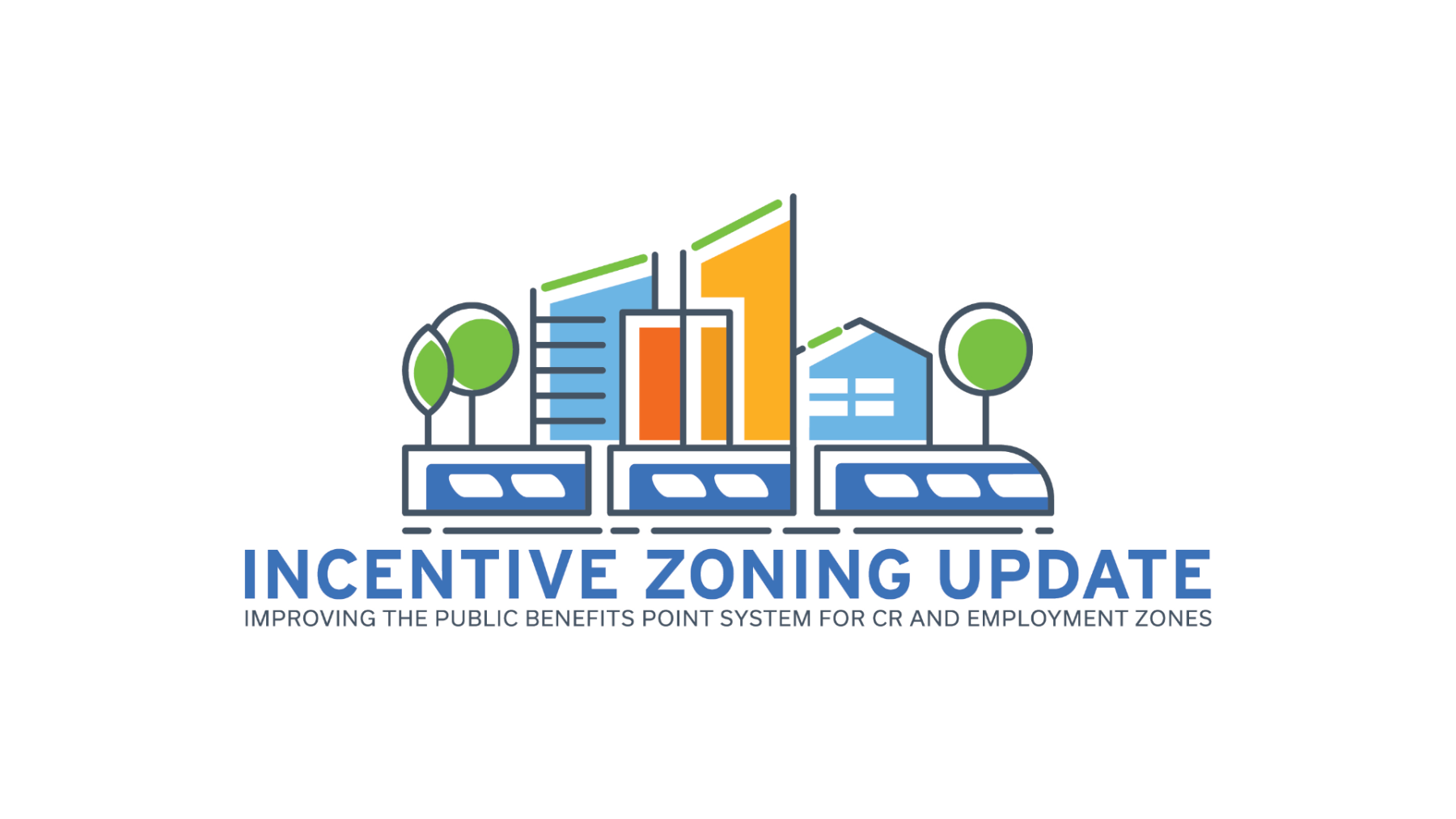Planners to present draft recommendations on the update to the Public Benefits Point System for Commercial-Residential and Employment Zones
Wheaton, Md. – The Montgomery County Planning Department, part of The Maryland-National Capital Park and Planning Commission (M-NCPPC), invites residents and the development community to attend two virtual open houses on the update to the Public Benefits Point System for Commercial-Residential and Employment Zones, also known as the Incentive Zoning Update. Planners will present an overview of the draft recommendations developed by stakeholder input, data analysis, and industry best practices research.
While this effort will not rezone any parcels or alter existing development, the effort will update the system used to evaluate new development and determine to what extent a development must provide corresponding public amenities. These changes will allow different neighborhoods to evolve with market trends and community needs while still enjoying the benefits of new development alongside what already gives the neighborhood its character. This update will also better align the point system with countywide priorities as envisioned in initiatives like Thrive Montgomery 2050, the Climate Action Plan, and the implementation of the county’s Racial Equity Law.
Overview of the project goals:
- Simplify the current policy and align public benefit categories with key county priorities.
- Ensure public benefits scale with the intensity of development and are proportional.
- Establish clear requirements for all site plan applications and the optional method of development.
- Provide sector plans with greater flexibility to tailor public benefits and ensure delivery through optional method of development.
“We’re really excited about these recommendations,” said project manager Atul Sharma. “We embarked on this project to modernize this policy and ensure that the public is getting the amenities they need, while making sure projects remain feasible in a challenging economic climate. The creation of complete communities is one of Thrive Montgomery’s central goals and we feel this update will help us get there.”
Planners began work on the update to the policy in 2023 and will present recommendations to the Planning Board for their review in summer 2024.
Watch a short video about the Incentive Zoning Update.
Virtual open houses
Planners are inviting the public and the development community to attend open houses in May 2024 to provide feedback on the draft recommendations. These meetings will be conducted on Microsoft Teams. RSVPs are required to attend.
May 8, 2024
6:30 to 8 p.m.
RSVP for May 8
May 15, 2024
6:30 to 8 p.m.
RSVP for May 15
About the Public Benefits Point System for Commercial-Residential and Employment Zones
The system incentivizes applicants to provide certain public benefits in exchange for obtaining additional density and height for their projects, based on transparent and publicly available evaluation criteria. Projects must achieve a minimum points total depending on their size, intensity, and location by providing public benefits to meet that score. This system ensures the delivery of high-quality public amenities, maintains equity across negotiations for public benefits with applicants, provides transparency and certainty about the review process, and expedites the overall timeline for regulatory reviews.
Applicants who want to build under the optional method of development must choose from a menu of public benefits that will be graded under the point system and analyzed for their ability to achieve master plan priorities. In return for the public benefits, they are allowed to build to the density and height shown on the zoning map. Most master plans in Montgomery County specify how to prioritize points to achieve plan goals for an area. Amenities, both within the project area and nearby, can include (but are not limited to):
- Affordable housing
- Major public facilities, like a library or a site for a new school
- Public parking, art, or open space
- Safe and attractive pedestrian connections
- Enhanced accessibility for people with disabilities
- Historic resource protection
- Sustainable design of buildings and sites
